Occupational Safety Training in Condom Manufacturing
99,000 ₫
Note: The above price is calculated for one person, the price may fluctuate depending on the number of trainees participating in the course and depending on market movements. For more accurate pricing support, please refer to the quotation table or contact our consulting staff directly.
Occupational safety is an important issue in condom manufacturing factories and needs to be addressed promptly to ensure the health and safety of workers, and to enhance the reputation of businesses. The Occupational safety training course is one of the effective solutions to raise awareness about accident prevention for workers participating in condom manufacturing.
Table of Contents
Toggle1. Overview of Condoms
a. What is a Condom?
A condom, also known as a prophylactic, is a thin, elastic sheath made of rubber or polyurethane, which may contain a lubricating gel or not. Condoms are worn on the penis to reduce the risk of sexually transmitted infections or to prevent pregnancy during sexual intercourse. They work by preventing sperm and infectious agents from entering or leaving the vagina.

b. Machinery used in condom manufacturing
The condom manufacturing process typically involves multiple steps and various types of machinery. Common machines used in condom production include:
- Rolling machines: These machines are used to shape condoms and roll them into thin sheets. This process usually involves forming condoms in cylindrical or oval shapes, then using the rolling machine to thin them out.
- Pressing machines: Used to press the various components of the condom together. Condoms are made from different rubber compounds and must be pressed to create a high-quality final product.
- Cutting machines: These machines cut condoms into different lengths and sizes.
- Packaging machines: Used to pack the produced condoms into various types of packaging.
- Testing machines: Machines that inspect the quality of condoms to ensure they meet required standards before reaching the market.
Depending on the scale and technology used, condom factories may use one or several types of machinery to produce high-quality products.

c. Condom manufacturers in Vietnam
In Vietnam, well-known condom brands include:
- Sagami Original: A famous condom brand from Japan, known for its unique design, ultra-thin quality, and high reliability.
- Carex: A condom brand from Malaysia, produced by Karex Industries Berhad. Carex condoms ensure safety, quality, and effectiveness in preventing sexually transmitted infections.
- Okamoto: A Japanese condom brand produced by Okamoto Industries, recognized for its sleek design, ultra-thin material, and durability.
- Jex: A condom brand from Indonesia. Jex condoms are available in Vietnam and have been trusted by consumers for many years.
- Durex: A renowned condom brand from the United Kingdom, produced by Reckitt Benckiser. Durex is known for its appealing design, high quality, and diverse product range to meet consumer needs.
d. Specific roles in a condom manufacturing plant
Group 1
- CEO, deputy CEO, and department heads in the condom manufacturing plant.
Group 2
- Safety officers: manage safety within the plant, design safety procedures, supervise, and enforce employee compliance with safe work practices.
Group 3
- Raw material preparation: The factory must provide sufficient raw materials for condom production, typically including natural or synthetic latex, additives, and lubricants.
- Material processing: Raw materials are processed before production. Latex is formed into thick sheets and subjected to heat treatment to achieve desired strength and elasticity.
- Product shaping: After preparation and processing, materials are molded and shaped into condoms of appropriate size and shape using pressing machines or injection molding technologies.
- Quality inspection: All condoms are inspected after production to ensure safety and effectiveness. Factors checked include thickness, strength, elasticity, and lubrication.
- Packing and boxing: After quality inspection, condoms are packed and boxed for distribution to retail stores, often printed with brand name, usage instructions, and safety warnings.
- Equipment cleaning and maintenance: The factory must carry out cleaning and maintenance of production equipment to ensure employee safety and product quality.
Group 4
- Office, service, sales, and marketing roles.
- Production management, quality management, human resources management, materials management, and financial accounting.
- Research and development of new products, including designing packaging and product prototypes.

2. Overview of Occupational Safety Training for Condom Manufacturing
In this article, we focus on issues related to Group 3, as Group 3 directly participates in production and faces the highest occupational safety risks. For other groups, refer here.
a. What is Group 3 Occupational Safety Training?
- Group 3 Occupational Safety Training consists of sessions that equip workers with awareness and methods to prevent occupational accidents.
- The training helps employees recognize and avoid hazards, minimizing the risks of workplace accidents during operations.
REGISTER FOR OCCUPATIONAL SAFETY TRAINING SERVICE
b. Training duration
Initial safety training duration:
- Total training time is at least 24 hours, including examination time.
- 8 hours of theoretical learning on policies and occupational safety laws
- 8 hours of theoretical learning on basic occupational safety and hygiene knowledge
- 4 hours of theoretical learning on specialized training content
- 2 hours of practical training on specialized content
- 2 hours for final theoretical examination
The training center schedules multiple sessions depending on employee availability. Typically, the course includes six sessions over three days, provided the manufacturing company can arrange continuous learning time.
Periodic safety training:
- Before the occupational safety card expires, employees must complete a periodic occupational safety training course. The periodic training duration is at least 50% of the initial training duration.
Explanation: Total periodic occupational safety training lasts at least 12 hours, including exam time. Upon completion and passing the assessment, employees are reissued or renewed their occupational safety card.
c. Training content
| No. | TRAINING CONTENT | TRAINING TIME (HOURS) | |||
| Total | Including | ||||
| Theory | Practical | Assessment | |||
| I | Policies and occupational safety laws | 8 | 8 | 0 | 0 |
| 1 | Overview of legal regulations on occupational safety and hygiene. | 6 | 6 | ||
| 2 | Standards and technical regulations on occupational safety and hygiene. | 1 | 1 | ||
| 3 | Specific regulations from governmental agencies regarding occupational safety when constructing, expanding, or renovating facilities, and using, storing, and inspecting machines and materials with strict safety requirements. | 1 | 1 | ||
| II | Basic knowledge of occupational safety and hygiene | 8 | 8 | 0 | 0 |
| 1 | Basic knowledge of hazards and harmful factors at the workplace. | 4 | 4 | ||
| 2 | Methods to improve working conditions. | 1 | 1 | ||
| 3 | Safety culture in production and business. | 1 | 1 | ||
| 4 | Rights and obligations of employers and employees; occupational safety policies; functions and duties of safety officers. | 1 | 1 | ||
| 5 | Occupational safety rules, signage, safety equipment usage, first aid skills, and occupational disease prevention. | 1 | 1 | ||
| III | Specialized training content | 6 | 4 | 2 | 0 |
| Comprehensive knowledge of machinery, equipment, and hazardous substances; risk analysis and management; safe working procedures with machines and materials requiring strict occupational safety. | 6 | 4 | 2 | ||
| IV | Final training assessment | 2 | 2 | 0 | 0 |
| Total | 24 | 22 | 2 | ||
See more training content for all six groups
d. Occupational safety card
Upon completion of the occupational safety training and passing the final assessment, employees are issued an occupational safety card (commonly referred to as a Group 3 safety certificate).
The Group 3 safety card displays personal information such as name, date of birth, job, and work environment. It also includes training duration, a red stamp, and signature confirming course completion.
According to regulations in Clause 2 of Article 24 of Decree 44/2016/ND-CP, there are two cases:
- If the employer and employee have a labor contract, the employer must sign, stamp, and endorse the safety card for Group 3 employees after completing training and passing the assessment.
- If the worker is freelance or seasonal and does not have a labor contract, the training unit must sign, stamp, and endorse the safety card after the worker completes the training and passes the assessment.

3. Identifying Hazards Affecting Workers in Condom Manufacturing
During condom manufacturing, potential risks and hazards for workers may include:
- Exposure to hazardous chemicals: Chemicals used in condom manufacturing may be harmful to workers’ health, such as solvents, adhesives, coloring agents, and fragrances.
- Risk of hand and finger impact: Workers in condom manufacturing may suffer injuries to hands or fingers from machinery, tools, or other materials.
- Electricity: The use of electricity during condom manufacturing may pose dangers to workers if proper safety procedures are not followed.
- High temperature: Workers may face the risk of burns from contact with heating equipment, materials, or high-temperature liquids during manufacturing.
- Infection: Condom manufacturing staff may be exposed to bacteria, viruses, or fungi when handling untreated materials or not using proper personal protective equipment.
- Other occupational accidents: Other accidents may occur during condom manufacturing, such as slips, falls, or entrapment while using equipment and tools.
4. Common Occupational Accidents for Workers in Condom Manufacturing
Some common occupational accidents in condom manufacturing include:
- Burns: As condom manufacturing involves high-temperature processes, lack of full protective equipment can lead to burns.
- Eye strain and vision loss: Working in a bright environment for extended periods may cause eye strain or vision problems.
- Chemical poisoning: Using chemicals in condom manufacturing can cause poisoning if safety procedures are not properly followed.
- Injuries from machinery: Using machinery during manufacturing may cause injuries if safety procedures are not followed.
- Accidents related to temperature and pressure: Steps involving heat and pressure in manufacturing can cause accidents if safety procedures are ignored.
- Infections: Condom production can lead to infections if hygiene and cleanliness are not maintained.
- Back pain and posture-related injuries: Tasks in condom manufacturing often require workers to stand or sit for long periods, causing back pain or posture-related injuries.

5. Safety Measures for Participating in Condom Manufacturing
Safety measures for participating in condom manufacturing include:
- Occupational Safety Training: Workers need training on manufacturing processes, occupational safety, and proper use of personal protective equipment.
- Use of protective equipment: Workers must be equipped with full protective gear such as safety glasses, masks, gloves, chemical-resistant jackets, and safety shoes.
- Inspection and maintenance of equipment: Manufacturing equipment must be regularly inspected and maintained to ensure safe and efficient operation.
- Hazardous chemical management: Chemicals used in condom production may be dangerous to workers. Proper procedures for handling and managing these chemicals must be in place.
- Fire management: Condom manufacturing facilities must have adequate fire detection and suppression systems. Staff should be trained to use fire safety equipment effectively.
- Working conditions: The work environment must be safe and comfortable, including proper lighting, temperature, and humidity.
- Reasonable task assignment: Jobs must be assigned properly to avoid overwork or accidents caused by lack of supervision.
- Periodic workplace environmental monitoring in factories to collect and analyze harmful factors for workers, adjusting and reducing hazards to prevent occupational diseases.
6. Benefits of Occupational Safety Training in Condom Manufacturing
An Toan Nam Viet provides your business with the following benefits upon completing occupational safety training courses according to Decree 44/2016/NĐ – CP regarding occupational safety and hygiene for companies, factories, and enterprises:
- Workers can identify potential occupational hazards and take preventive measures to avoid accidents.
- Your enterprise can establish risk prevention measures in manufacturing, operation, and maintenance processes.
- Reduce costs associated with potential workplace safety risks.
- Uninterrupted manufacturing processes improve labor productivity and product quality.
- Comply with occupational safety laws, avoiding legal risks.
- Enhance reputation and professionalism, thereby elevating your business brand.
An Toan Nam Viet’s training courses are solutions to prevent external hazards from affecting individuals, helping them avoid dangers that could result in injury or, in severe cases, death.
REGISTER FOR OCCUPATIONAL SAFETY TRAINING SERVICE
7. Customer Feedback After Completing Condom Manufacturing Safety Training
An Toan Nam Viet has many years of experience accompanying businesses across Vietnam, especially in the southern provinces. This responsibility is extremely valuable, which is why An Toan Nam Viet’s Occupational Safety Training is increasingly professional. The growth and development of An Toan Nam Viet are fueled by positive feedback and suggestions from businesses. Below are testimonials from partners we have served.
Bac Nam E&C Investment and Construction Joint Stock Company
“The first time I used the service at An Toan Nam Viet, I was very surprised by the enthusiastic 24/7 support from the consulting team. Class organization was quick and convenient for our company. Thank you very much, Nam Viet!”
Hoa Dat Construction and Trading Joint Stock Company
“Nam Viet’s service greatly helped us simplify occupational safety and complete safety documentation for work processes. The consulting team is enthusiastic and timely in addressing our questions. Five stars for Nam Viet.”
See more customer interview sessions after using the service of An Toan Nam Viet
8. Occupational Safety Training Capacity of An Toan Nam Viet
An Toan Nam Viet is a reputable and high-quality center for occupational safety training in Vietnam. Safety training sessions are conducted continuously at factories, manufacturing facilities, or construction sites across the country (all 63 provinces of Vietnam).
REGISTER FOR OCCUPATIONAL SAFETY TRAINING SERVICE
Occupational Safety Training License
- An Toan Nam Viet has been inspected and certified by the Department of Safety under the Ministry of Labor, Invalids and Social Affairs and granted the certificate for eligibility in occupational safety and hygiene training. This further strengthens our capacity in occupational safety training.

Training Materials and Lectures
- Before being used in occupational safety training courses, training materials are reviewed and approved to ensure lectures are accurate and effective when applied.
- Instructors’ teaching methods are standardized according to An Toan Nam Viet guidelines, derived from expert research in occupational safety and hygiene training to maximize knowledge retention for learners.
Facilities
- Controlling factors in classrooms affecting the training process increases teaching efficiency and learners’ knowledge retention.
- Our training facilities provide spacious classrooms meeting standards for area, lighting, and training equipment, ensuring effective learning.
9. Nationwide Reputable and Quality Occupational Safety Training Center
At An Toan Nam Viet, we prioritize professional dedication to occupational safety training. Teaching workers to protect themselves equips them with safety knowledge essential for their livelihoods and contributes to nation-building.
To ensure training effectiveness, we meticulously prepare everything, from teaching tools and equipment to curricula, materials, sound, and lighting.
Our occupational safety instructors are experts with many years of experience and have conducted research to identify hazards across industries and the methods to prevent them.
Lectures are derived from practical experience and delivered in a lively, easy-to-understand manner, helping workers comfortably absorb the knowledge. All content strictly follows Decree 44/2016/NĐ-CP.
This equips workers with preventive measures and self-protection skills, applied appropriately in real work scenarios.
Our training center is proud to provide professional and reputable occupational safety training with advantages such as:
- Competitive training costs without compromising quality.
- Flexible training schedules to accommodate enterprise production plans.
- Fast and legally compliant certification procedures.
- Instructors with extensive experience.
- Classrooms controlled for factors affecting training to maximize teaching efficiency and knowledge retention.
- Lectures tailored to occupational safety requirements of enterprises.
- An Toan Nam Viet works dedicatedly and professionally to provide accurate and fast support for customers.

10. Additional References for Occupational Safety Training in Condom Manufacturing
- Occupational safety materials for condom manufacturing
- Occupational Safety Training Materials Set
- Occupational Safety Training Exam Set
- Occupational Safety Training Curriculum for Condom Manufacturing
- Occupational Safety Multiple-Choice Test for Condom Manufacturing
1 review for Occupational Safety Training in Condom Manufacturing
No comments yet

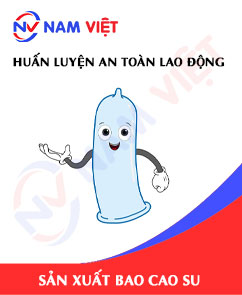
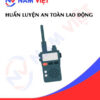
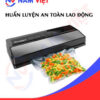






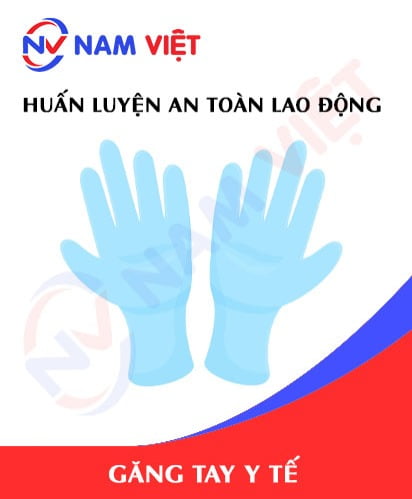
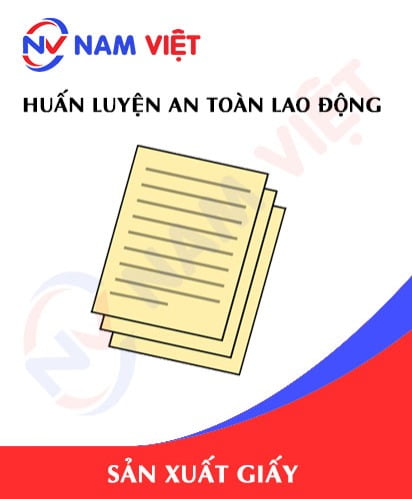



namchinh.haiphong341
Dịch vụ huấn luyện an toàn lao động rất tốt nhé, giảng viên dạy rất sinh động dễ hiểu!